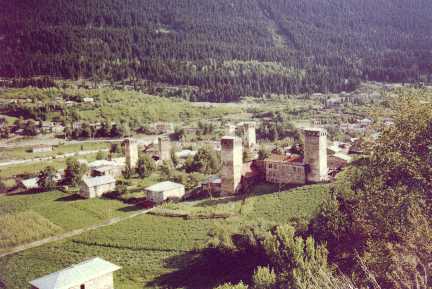
Caucasus Mountains of Svanetti Region -- August, 1998
A few days ago I returned from my first real vacation of the summer -- a week long trip to a remote valley in the Caucasus Mountains. The Svanetti region is where the "real" Georgians come from, the ones who eat yogurt and live well past 100 years old. Apparently the wheel didn't make it to this region until the 1930's when the Soviets built the first road up that way.
Friday after work I drove three and a half hours to Kutaisi, Georgia's second largest city where I had stayed three nights in the spring. Then Saturday morning I continued west on Georgia's best road, almost to the Black Sea. Then I turned north. I passed three checkpoints where Russian peacekeepers asked for cigarettes and checked that I wasn't carrying any guns. Four hours and 80 miles later I got to Mestia, the main village of the region. I quickly found the house where I had a reservation, right off the main square. There I learned that my hostess was away until the next day but that she had appointed her eleven year old son Giorgias my guide. His grandparents also welcomed me and asked if I was hungry -- they fed me well throughout my stay.
Fortunately Giorgi knew some English and he happily showed me a museum with a traditional Svanetti house. The house was all stone with just a couple of tiny windows. Inside was a big fireplace/hearth, an uncomfortable large chair for grandfather, a long bench for the men and a smaller one for the women. The beds were just big shelves in the back, but they were decorated with ornamental carving. For light there was a small metal grate hanging from the ceiling on which small pieces of wood were burned.
 |
| Towers in Village |
Next to the house was a stone tower. There were no doors or windows on the ground floor, but we climbed a ladder, entered through a small opening, then went up a series of ladders to the top. Many old houses had towers like this to hide from invaders and to make life miserable for them down on the ground.
One night I joined a group of tourists from England to see a performance of traditional Svanetti songs and dances. The melodies are non-western and seemed non-eastern too.
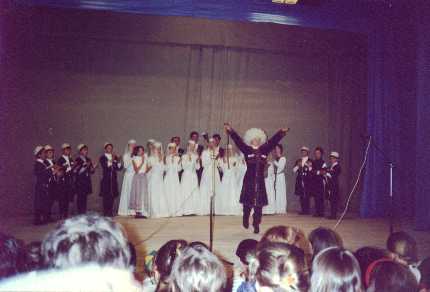 |
| Svanetti Dances |
The Mestia valley is surrounded by sheer mountains, many more than 12,000 feet high, some as high as 17,000 feet. They were spectacular but too high for me to climb. Instead I went on some fine walks in the valleys and up some of the smaller hills.
After a couple of days it was time to go to the remote village of Ushguli, 30 miles away but a two and a half hour drive. Ushguli claims to be the highest continuously inhabited village in Europe at about 7000 feet. There are no shops, not even street vendors where you could buy bread or other essentials. Few people seem to have cars, though there are many horses. They make their living raising cattle, pigs and a few sheep and making cheese.
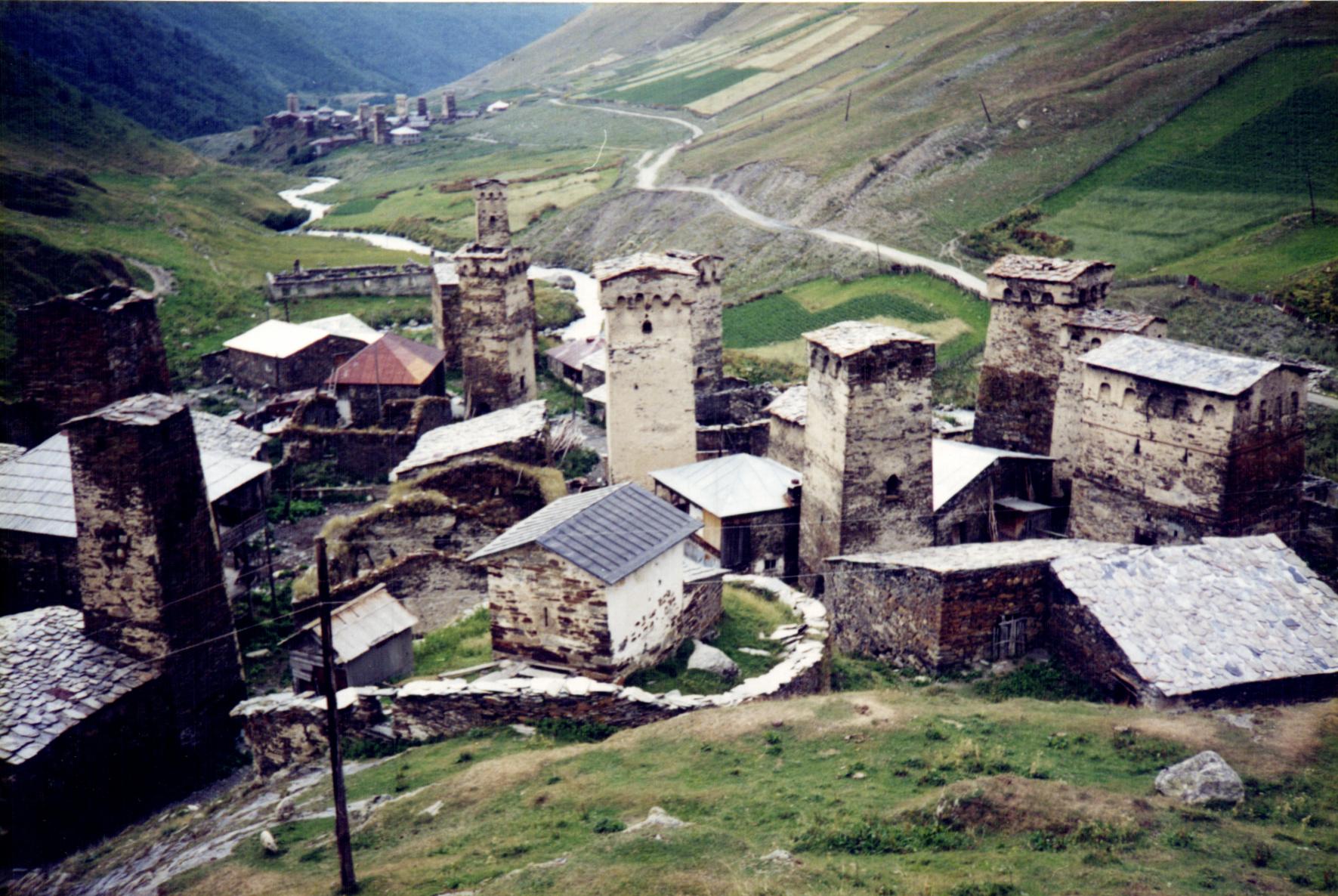 |
| Ushguli |
Giorgi showed me the way to his cousins' house there. That house, like most in Ushguli had no running water and was clean but plain. The grandmother there seemed to spend all her time cooking bread, khachapuri (a fine Georgian pastry filled with cheese) and the other staple of Svanetti meals: potatoes. Potatoes seem to be the only crop that thrives there besides hay for the horses and cattle. There was no refrigerator, so that after they milked the cow any milk that wasn't drunk promptly was made into yogurt or cheese.
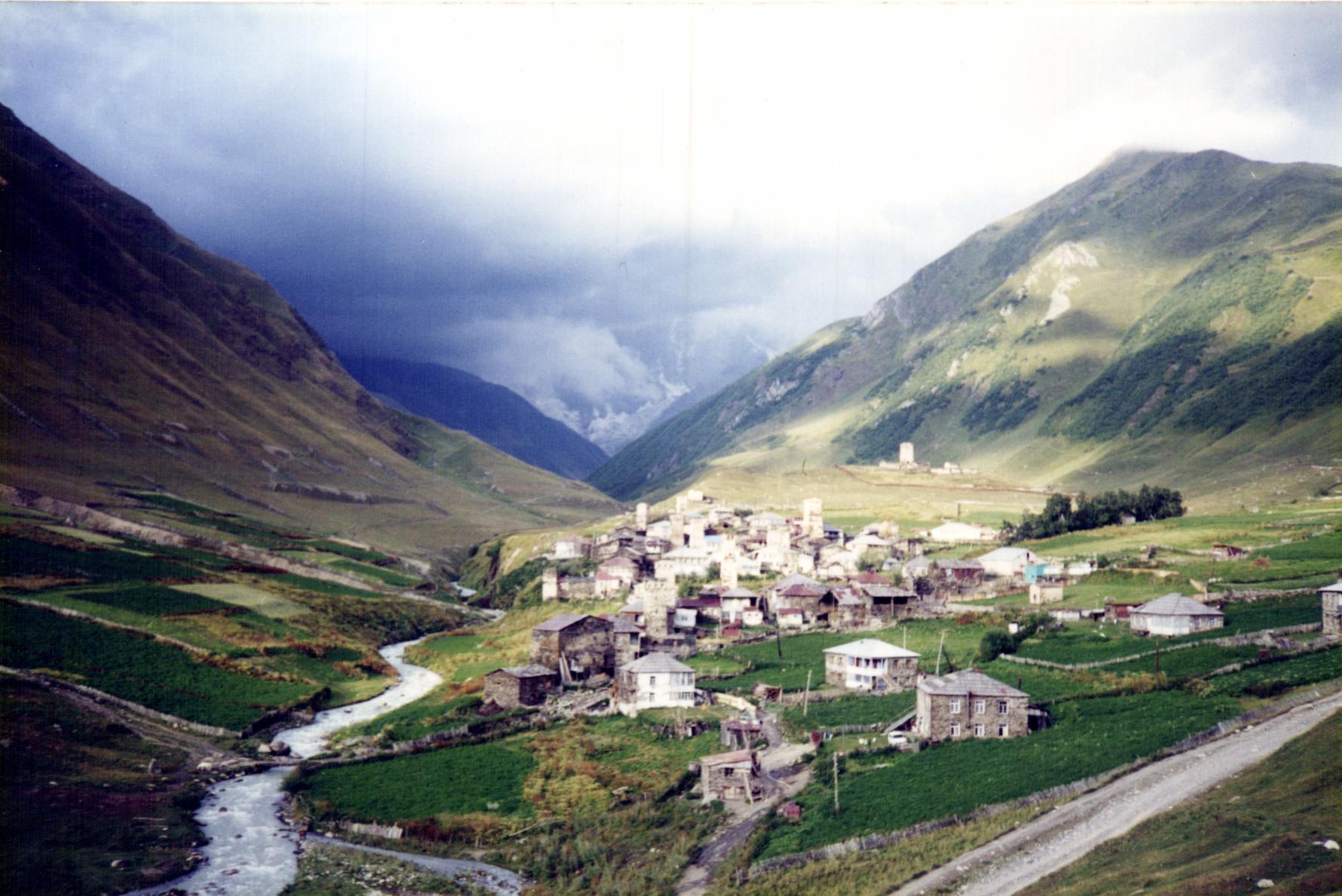 |
| Ushguli |
My guide recruited his twelve year old cousin to help show me around Ushguli. They showed me the churches and museums (they were fine gold-smiths two to three thousand years ago) and we explored a fortress high up on the hill above the village. Both boys rode horses the way American kids ride bikes, so when I wanted to explore the valleys and passes, they got on their horses to show me the way and I happily walked. We went to the glacier that is the source of Georgia's second largest river. They did make me ride the horse long enough to cross the river one time. I was convinced that I would fall off, but somehow I survived. We found a mineral water spring, then a suspension bridge where the surface was woven of small branches no more than half an inch in diameter.
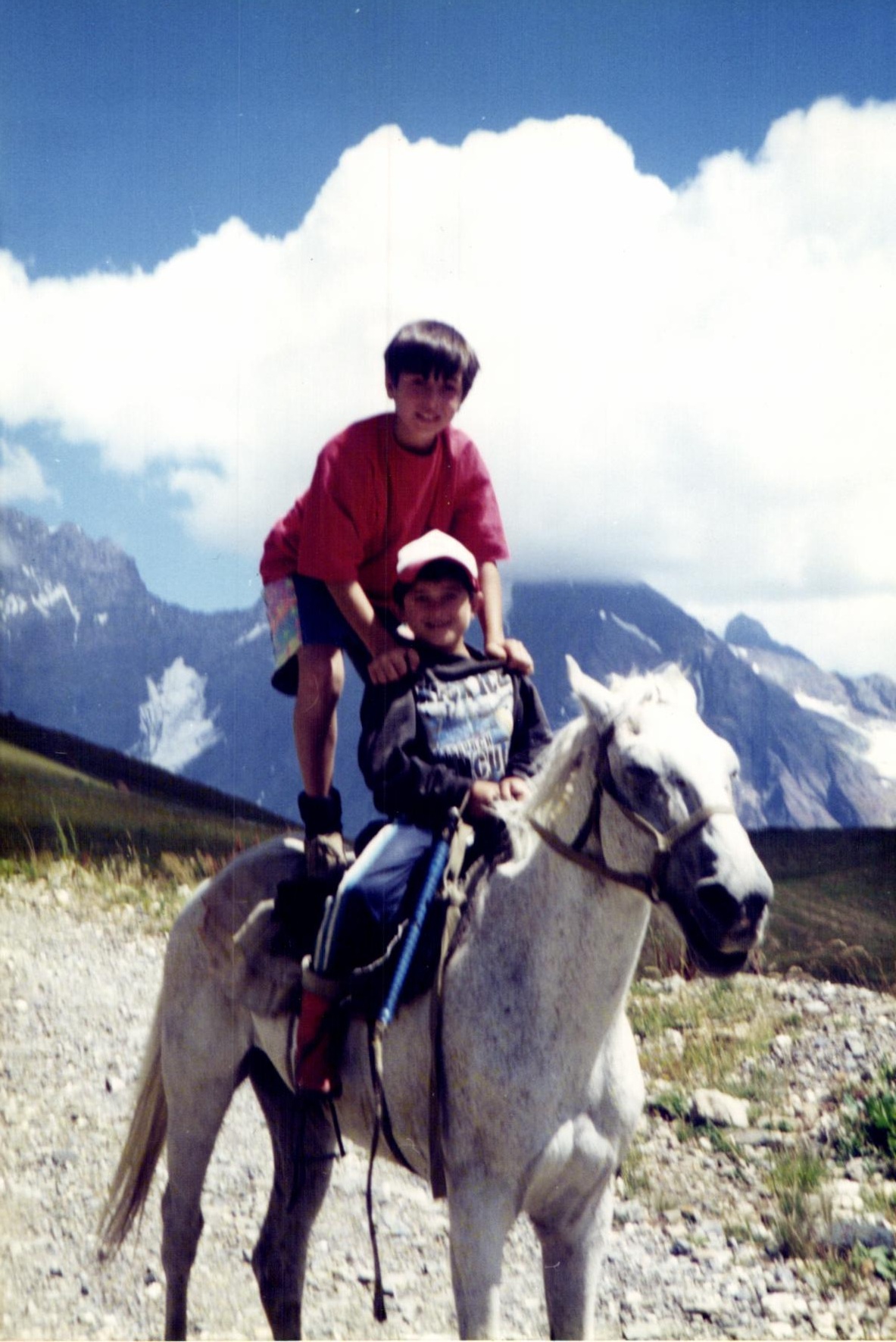 |
| My Guides Ride, I Choose to Walk |
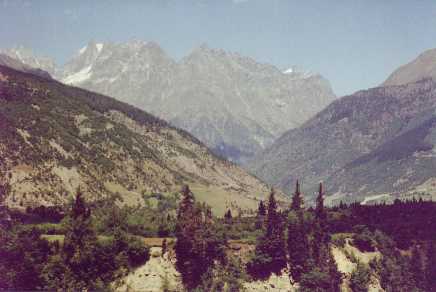 |
| Caucaus Mountains |